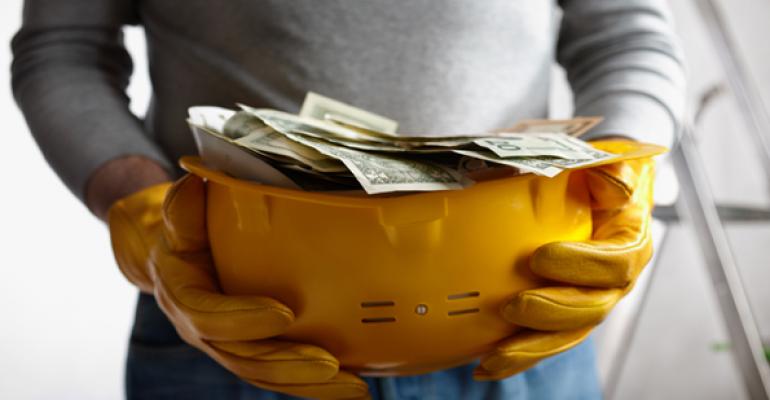The good news for the multifamily industry is that the cost of construction materials is very low. The bad news is that skilled construction workers are increasingly expensive and hard to find.
“I’m pretty optimistic that materials costs are going to stay low and maybe get lower,” says Ken Simonson, an economist with Associated General Contractors of America, an industry trade group. “My number one concern is the availability of labor.”
The U.S. economy is relatively strong—at least compared to the rest of the world. From Asia to Europe, economies around the world have struggled this year, driving down demand for products bought and sold on the global market, from oil and steel to concrete. But here in the U.S., unemployment is low. The price of labor needed to build large projects is high and rising, often wiping out the cost benefit of cheaper materials.
Overall costs rise
The prices contractors charge for construction projects, including the cost of labor, rose slowly but significantly this year, according to the U.S. Bureau of Labor Statistics. The overall producer price index for the construction of new non-residential buildings climbed 1.8 percent over the year that ended September 2015. (Costs for “non-residential” construction do not include single-family homes, and include many of the same materials and labor as large apartment developments, especially high-rise apartment buildings.)
The 12-month increases ranged from 0.2 percent for healthcare construction to 1.8 percent for schools to 1.9 percent for warehouses and industrial buildings and 2.4 percent for office buildings.
Worldwide demand for many commodities has fallen over the last year and that makes those goods less expensive in the United States.
“China…seems to be at the root of the story,” says Simonson. A few years ago, developing economies like China grew very quickly. Suppliers both inside the country and around the world rushed to meet that demand, just in time for the Chinese economy to begin to slow down. Prices for steel mill products fell 15 percent over the year that ended September 2015. Prices for copper and brass mill shapes fell 14 percent, for aluminum mill shapes 12 percent, for paving mixtures and blocks 5.1 percent, for flat glass 4.6 percent and for cement 6.3 percent.
Energy costs have also posted a steep decline. That’s partly because oil and gas drilling in the U.S. has brought a huge supply of fuel to the global markets. In addition, as growth slowed in emerging economies like China, demand for oil and gas is lower worldwide. Prices for diesel fuel, which contractors use in their trucks, fell 44 percent over the 12 months that ended in September.
Prices also fell for wood products, including lumber and plywood, which dropped 11 percent over the 12 months that ended September 2015.
Stronger U.S. economy pushes labor costs higher
At the same time, apartment developers are competing to hire skilled laborers.
“Residential construction has been mixed, but generally stronger in the latest reporting period, with multifamily outpacing single-family construction,” according to October’s “Beige Book” report from the Federal Reserve. “Strong multifamily construction was highlighted in the New York, Cleveland, Richmond and San Francisco districts, while Atlanta reported strong residential construction generally.”
But there are relatively few skilled workers available to help build these apartment projects.
“Over 60 percent of construction workers displaced by the housing bust are employed in other industries or have left the labor market by 2013,” said Hubert Janicki and Erika McEntarfer in their report “Where Did All the Construction Workers Go?” posted by the Census Bureau in October.
A few construction materials are also becoming more expensive, especially if the the materials tend to be difficult to sell overseas. For example, the heavy, bulky materials needed to build a “curtain wall” of glass windows for a high-rise building tend to be built in the U.S., in factories not far from the construction sites. These factories never geared up to supply Chinese developers. They now struggle to fill the orders from high-rise developers in the United States.
“I’ve heard scattered reports of delays in deliveries for curtain walls for high-rise projects,” says Simonson.
“We’ve seen several years now of the economy starting to rev up and then stalling,” he adds. “The safest prediction is that the next quarter won’t be like the last.”

